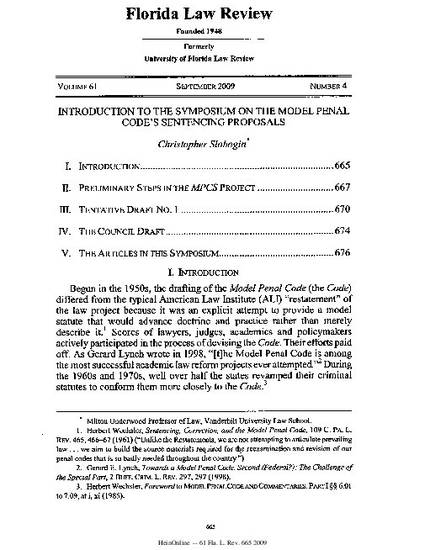
- Model Penal Code,
- sentencing provisions,
- judicial discretion
- Criminal Law and
- Law
Begun in the 1950s, the drafting of the Model Penal Code (the Code) differed from the typical American Law Institute (AL) "restatement" of the law project because it was an explicit attempt to provide a model statute that would advance doctrine and practice rather than merely describe it. Scores of lawyers, judges, academics and policymakers actively participated in the process of devising the Code. Their efforts paid off. As Gerard Lynch wrote in 1998, "[t]he Model Penal Code is among the most successful academic law reform projects ever attempted.", During the 1960s and 1970s, well over half the states revamped their criminal statutes to conform them more closely to the Code. The Code's most popular innovations were the liability rules found in its so-called "general" provisions, which address overarching conduct and mental state requirements, attempt and conspiracy rules, imputation doctrines such as complicity, and the defenses. The Code's definitions of "specific" offenses were not as influential. But they too were innovative and are still taught in American law schools as a coherent alternative to existing federal and state provisions.
Available at: http://works.bepress.com/christopher-slobogin/72/
